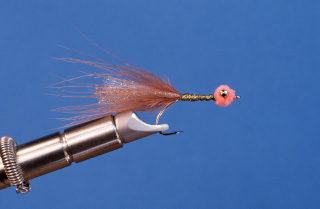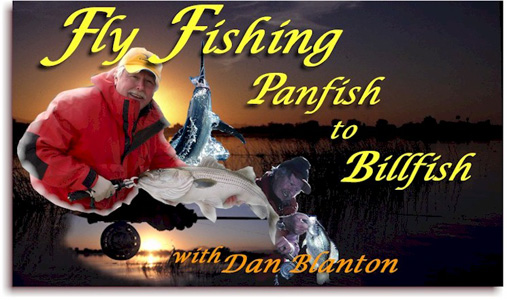
The Surf Grub by Ken Hanley
Fly Pattern and Story by Ken Hanley – Photos by G. Kishi
I believe many of the patterns created today are variations of past triumphs at the vice. My Surf Grub was inspired by the highly successful bonefish pattern known as the “Mini Puff.”
The Surf Grub is one tough bugger, and as you know, surf perch live in one tough neighborhood! I wanted to work with materials that could be slammed into the beachhead and ground among the churning debris. I’ve found that Antron has become one of my favorite choices for what I call “hard-knock duty.” This wondrous synthetic is literally the carpet fiber we walk on daily. You couldn’t ask for a better testimony to its lasting strength. With that endorsement in mind I felt the material would create one of the toughest bodies I could wrap. Its performed perfectly in what might be the wildest habitat on the planet!
Another quality I enjoy about Antron fiber is that it flows when it’s used as a tail or wing material. If I’m working with it in either of these applications, I usually comb the fibers to enhance their animation capabilities. Combing the material will also blend any color combinations into a more life-like presentation.
The fly’s roe sac is the real trigger to the effectiveness of the pattern. (Extensive studies have shown Pacific mole crabs to be the dominant food source for perch. The crab’s roe offers a distinct target for foraging fish to key on.) I tried using a variety of dubbing at first and finally settled on fine diameter Chenille. It offers a quicker and more durable means for creating the sac.
Study the perch’s mouth structure, and you’ll find it akin to a crappie’s mouth (paper thin membrane, conical, etc.). I’ve chosen to work with a hook design that wont tear at the susceptible membrane. The fine diameter wire affords a quick penetration and clean puncture position. The hook doesn’t continue to bore a larger hole under pressure. For the record, I do pinch down the barb on every fly I use in the surf, regardless of the original hook design. I feel I’m a more effective angler with barbless hooks.
Another note on the feeding signature of these fish is worth mentioning. Located in their throat is a set of robust dentures used for crushing. It’s a clear adaptation for the fish to feed heavily on crustaceans (and soft shell clams). Instead of nipping at their prey, they are far more efficient using a vacuum technique inhaling their food source. Again, the hook I prefer to tie the Surf Grub on gives me a better opportunity to retrieve the fly rapidly promoting less stress on the fish.
Food For Thought…
When I see a prolific crab hatch taking place on the beach, I prefer to use a pattern that doesn’t quite match the hatch. The Surf Grub is just such a fly. Why not go for an exact match? Let me revert to a freshwater experience to set up the scene. Most of us can relate to a day on the stream when we agonized about our choice of flies, and the execution of a perfect presentation, just to experience another rejection from a glutonous trout on the prowl. (Hang in there folks… we’ll get to the surf stuff shortly.) At some point we began to fumble through the fly box and we happened upon an ant. With nothing to lose, and everything to gain, we gave the ant a try and WHAM we found success! Why? Probably because our ant could be singled out from the pack yet still have a “qualified” familiar profile and presence.
Getting back to the surf zone scenario, crab clouds can be a magnet for perch while at the same time a hinderance to your angling success. Casting an exact imitation of a mole crab at this time might actually be drawing attention to the one thing it doesn’t have, a taste like the naturals. I’d rather play to the strengths of an impressionistic fly and get targeted for a positive trigger… in this instance it’s the roe sac and its color.Cheers!
